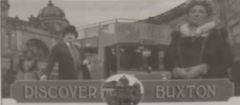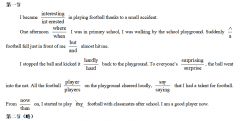陕西西安市铁一中2016届下学期开学考试英语试题及答案(2)
C. help people stay healthy
D. make people get prepared for sports
24. The text mainly talks about ______.
A. the fun of exploration
B. what to bring for exploration
C. the way to use the map in exploration
D. how to prevent getting lost in exploration
B
This year some twenty-three hundred teenagers from all over the world will spend about ten months in U. S. homes. They will attend U. S. schools, meet U. S. teen-agers, and form impressions of the real America. At the same time, about thirteen hundred American teen-agers will go to other countries to learn new languages and gain a new understanding of the rest of the world.
Here is a two-way student exchange in action. Fred, nineteen, spent last year in Germany with George’s family. In turn, George’s son Mike spent a year in Fred’s home in America.
Fred, a lively young man, knew little German when he arrived, but after two months’ study, the language began to come to him. School was completely different from what he had expected----much harder. Students rose respectfully when the teacher entered the room. They took fourteen subjects instead of the six that are usual in the United States. There were almost no outside activities.
Family life, too, was different. The father’s word was law, and all activities were around the family rather than the individual. Fred found the food too simple at first. Also, he missed having a car.
“Back home, you pick up some friends in a car and go out and have a good time. In Germany, you walk, but you soon learn to like it.”
At the same time, in America, Mike, a friendly German boy, was also forming his idea. “I suppose I should criticize American schools,” he says. “It is far too easy by our level. But I have to say that I like it very much. In Germany we do nothing but study. Here we take part in many outside activities. I think that maybe your schools are better in training for citizens. There ought to be some middle ground between the two.”
25. The whole exchange program is mainly to _____.
A. help teenagers in other countries know the real America
B. let students learn something about other countries
C. send students in America to travel in Germany
D. have teenagers learn new languages
26. According to the passage, we can infer that _____.
A. German schools were not as hard as American schools
B. Both of them disliked their own country’s educational model
C. there was some middle ground between the two teaching buildings
D. a better education should include something good from both America and Germany
27. What’s the writer’s attitude in writing this passage?
A. Objective B. Persuasive C. Subjective D. Defensive
C
Maybe ten-year-old Elizabeth put it best when she said to her father, “But, Dad, you can’t be healthy if you’re dead.”
Dad, in a hurry to get home before dark, had forgotten to wear his safety belt—a mistake 75% of the US population make every day. The big question is why.
There have been many myths (false ideas) about safety belts ever since their first appearance in cars some forty years ago. The following are three of the most common.
Myth Number One: It’s best to be “thrown clear” of a serious accident.
Truth: Chances are that you would travel through a windshield or door and get out of your car without wearing the safety belt. But any accident serious enough to “throw you clear” is also going to be serious enough, only giving you a very bad landing. Studies show that chances of dying after a car accident are twenty-five times greater in cases where people are “thrown clear”.
Myth Number Two: Safety belts trap people in cars that are burning or sinking in water.
Truth: Sorry again, but studies show that people knocked unconscious due to not wearing safety belts have a greater chance of dying in these accidents. People wearing safety belts are usually protected to the point of having a clear head to free themselves from such dangerous situations, not to be trapped in them.
Myth Number Three: Safety belts aren’t needed at speeds of less than 30 miles per hour.
Truth: When two cars traveling at 30 mph hit each other, an unbelted driver would meet the windshield with a force equal to diving head first into the ground from a height of 10 meters.
28. Why did Elizabeth say to her father, “But, Dad, you can’t be healthy if you’re dead?”
A. He was driving at great speed. B. He was running across the street.
C. He didn’t take his medicine on time. D. He didn’t have his safety belt on.
29. According to the text, it is very dangerous for you to be “thrown clear” in a serious accident for you ______.
A. may get caught in the car door
B. may be knocked down by other cars
C. may find it impossible to get away from the seat
D. may get seriously hurt being thrown out of the car
30. What is the advice given in the text?
A. Never drive faster than 30 miles an hour.
B. Tie your belt to save yourself in a car accident.
C. Never forget to wear the safety belt while driving.
D. Drive slowly while you’re not wearing a safety belt.
31. The passage is mainly developed _____.
A. by space B. by example C. by time D. by process
D
A serious problem for today's society is who should be responsible for our elderly and how to improve their lives. It is not only a financial problem but also a question of the system we want for our society. I would like to suggest several possible solutions to this problem.
First, employers should take the responsibility for their retired employees. To make this possible, a percentage of profits should be set aside for this purpose. But when a company must take life-long responsibility for its employees, it may suffer from a commercial disadvantage due to higher employee costs.




